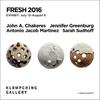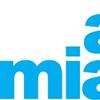First Exhibition to Document Artistry of Fraternal Orders Opens January 20 at American Folk Art Museum
- NEW YORK, New York
- /
- January 06, 2016
Collection of 190 Works Donated to Museum by Kendra and Allan Daniel, a Trustee.
Enlightenment, wisdom, friendship, charity, and trust are but a few of the ideals made manifest through works of art in Mystery and Benevolence: Masonic and Odd Fellows Folk Art from the Kendra and Allan Daniel Collection, the first exhibition to document the rich aesthetic heritage of cultural artifacts related to fraternal orders in the United States. On view at the American Folk Art Museum from January 20th through May 8th, 2016, the more than 200 works—ritual props; embellished architectural elements; lodge furnishings; hand‐stitched and painted banners and aprons—were made by self‐taught artists, artisans, and manufactories from the late 1700s through the early decades of the 20th century for secret societies that flourished in plain sight throughout America. The exhibition celebrates and commemorates a major gift from Kendra and Allan Daniel, a museum trustee, who assembled the collection over the course of thirty years.
Dr. Anne‐Imelda Radice, Executive Director, commented: “We are thrilled to receive this outstanding gift from Kendra and Allan Daniel. The fraternal history is part of our shared American story. This exhibition highlights the creativity as well as the iconography of this under‐explored and wonderful area of folk art.”
Stacy C. Hollander, Deputy Director for Curatorial Affairs and Chief Curator at the American Folk Art Museum organized the exhibition with Aimee E. Newell, Ph.D., Director of Collections at the Scottish Rite Masonic Museum & Library, a guest curator. An illustrated catalog of the same title will be available at the Museum Shop and online in 2016.
Freemasons, Odd Fellows, and other fraternal organizations rooted in fellowship comprise one of the largest social and benevolent movements in early American history. In 1900, virtually one in every five men belonged to a fraternal society. Such organizations continue to bring members together to share values, improve themselves and their communities, and help others, particularly those in need. Each order conveys messages and honors their collective brother‐ and sisterhoods through ceremonies, rituals, and moral teachings, which are rooted in symbolic systems that impart and reinforce core tenets among their constituents. On view in the exhibition are imposing architectural elements (carved columns, archways, and a dramatic painted scenic backdrop); ritual and ceremonial objects (tracing boards replete with symbols used as mnemonic devices, hand‐carved staffs, banners); personal items (aprons, certificates, and medals); lodge furnishings (altars and three‐dimensional symbolic props). All are imbued with an amalgam of time‐honored hieroglyphs that members recognize and revere for their encoded meanings. These symbols, often exuberantly rendered with meticulous care in a variety of mediums, include: square and compasses, all‐seeing eyes, hands, stars, arrows, skulls and crossbones, and many more. While each fraternal group has different regalia and ritual stories, they share the use of a symbolic language and employ the icons to teach similar virtues.
Freemasonry is the earliest fraternal order in America, introduced in the 1720s. Its ideals were closely allied with enlightenment thought, and many of America’s founding leaders—including George Washington—were Masons. The early national period witnessed the incorporation of Masonic symbols into virtually every aspect of everyday life, from ceramic wares to decorative arts to textiles. Odd Fellowship was officially instituted in Baltimore in 1819 and became one of the largest fraternities in the United States. Beginning in the 1820s a movement against Freemasonry gained traction and ultimately became a political party, but this backlash saw a decline under the presidency of Andrew Jackson, who was himself a Mason. Following the Civil War there was once again a widespread drive for the comradeship and unity offered by fraternal societies.
Many objects associated with fraternal practice (before the Civil War) were made by the same artisans who were plying decorative trades in the early years of the nation. The economic potential of fraternal orders was widely recognized and numerous artists made the accouterments and props needed for lodge meetings. They specifically incorporated fraternal symbols within their works to appeal to this market. In the years following the Civil War, and with the resurgence of fraternal participation, these paraphernalia, once made by hand or produced in small workshops, were increasingly made in larger manufactories devoted to the fraternal trade. Handwork continued to be associated with embroidered uniforms and banners, but many of the artifacts were now made by machine.
The material culture of fraternity comprises a large and important area of American art. Following a pattern similar to other arenas of self‐taught or folk art before the age of mass production, the artist who painted a portrait or piece of furniture might also decorate a parade banner, an apron, symbols on a chart, or a backdrop for a lodge. Techniques and motifs associated with folk art traditions are found in the art of fraternal orders, and this visual language persists and continues to resonate today.
Highlights of the exhibition include:
• An early daguerreotype portraying an Odd Fellows member wearing his collar and apron. The symbols clearly visible on the heavily fringed apron show a tent and crossed shepherd’s crooks, among others, indicating that the unidentified gentleman had received the Odd Fellows Encampment degree. This was conferred on members only after they had achieved prior degrees.
• Carpenter James J. Crozier’s (1867‐1950) exquisite tilt‐top marquetry table, the center of which features a shield prominently marked “I O O F” and “F L T,” with heart‐in‐hand, all‐seeing eye and three‐link chain symbols. With these initials and symbols, Crozier identified himself as a member of the Independent Order of Odd Fellows, a fraternal group that originated in England in the 1700s and arrived in the US by 1819. The three‐link chain with initials standing for “Friendship, Love and Truth” reminded members of their ritual teachings from the initiatory degree: like the chain, they were bound together in those virtues. The all‐seeing eye symbolized the omniscience of God, and the heart‐in‐hand signified candor and sincerity.
• Two quilts, one boldly appliquéd with the repeated motif of the Odd Fellows links, the other a magnificent album quilt with the symbols of Freemasonry filling each block.
• A varied collection of staffs and rods, one of which, particularly unique, is known as “Aaron’s Budded Rod:” a red pole that curves at the top, has five “buds” that extend to the sides, and is topped by a crown‐shaped finial. When the Odd Fellows followed a five‐degree structure, the rod was part of the Fifth, or Scarlet Degree, and it was recognized as an “emblem of life‐giving truth.”
• A stunning sign, red with gold letters, that reads “Bury the Dead,” from an Odd Fellows lodge.
• Masonic symbols beautifully painted on the underside of a chest lid, which would be seen only by the owner or user, and which reveal the hand of an experienced decorative painter.
References to Freemasons, Odd Fellows, Knights Templar, and other fraternal societies (real and imaginative) are rife throughout popular culture: from the dollar bill to the imagery of tattoos; in cartoons from The Flintstones to The Simpsons; in television programs (The Honeymooners, for example) and movies such as National Treasure; and in popular fiction from The Da Vinci Code to the Harry Potter series; among others.
The exhibition is supported in part by Joyce Berger Cowin, Kendra and Allan Daniel, the David Davies and Jack Weeden Fund for Exhibitions, the Ford Foundation, the Leir Charitable Foundations, public funds from the New York City Department of Cultural Affairs in partnership with the City Council, and the New York State Council on the Arts with the support of Governor Andrew Cuomo and the New York State Legislature.
For more information, the public may visit www.folkartmuseum.org
















